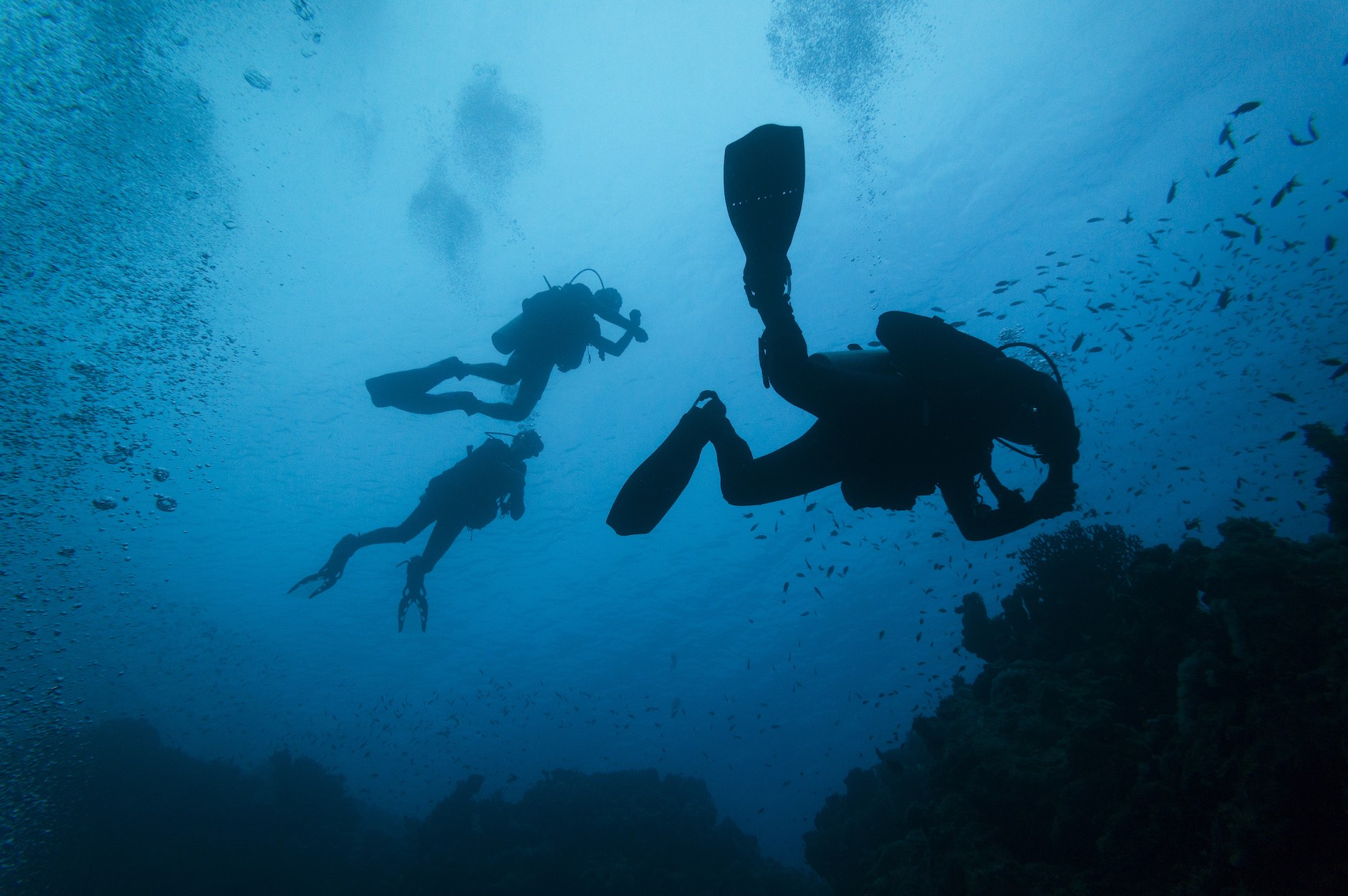
Collaboration and constraints imposed by purpose-driven utility have spawned some of the most enduring and iconic watches of all time: Consider the Omega Speedmaster and its lasting history with NASA and space exploration, or a Rolex Milsub (ref. 6538 or 5512), designed for use by the Royal British Navy. But perhaps one of the richest and most storied tales of collaboration exists between scuba divers and manufacturers of dive watches (for a full history of the dive watch, see David Bredan’s article here). Throughout the late 20th century, working directly with divers and dive organizations ultimately led to innovations in technology (increased water-resistance, improved gaskets and seals, helium escape valves), but also spawned a slew of creative designs, from orange-dialed DOXAs to the retro-futuristic Omega PloProf. However, working with divers and creating watches designed to thrive in an underwater environment also brought another important problem to light: the dire state of the world’s oceans.
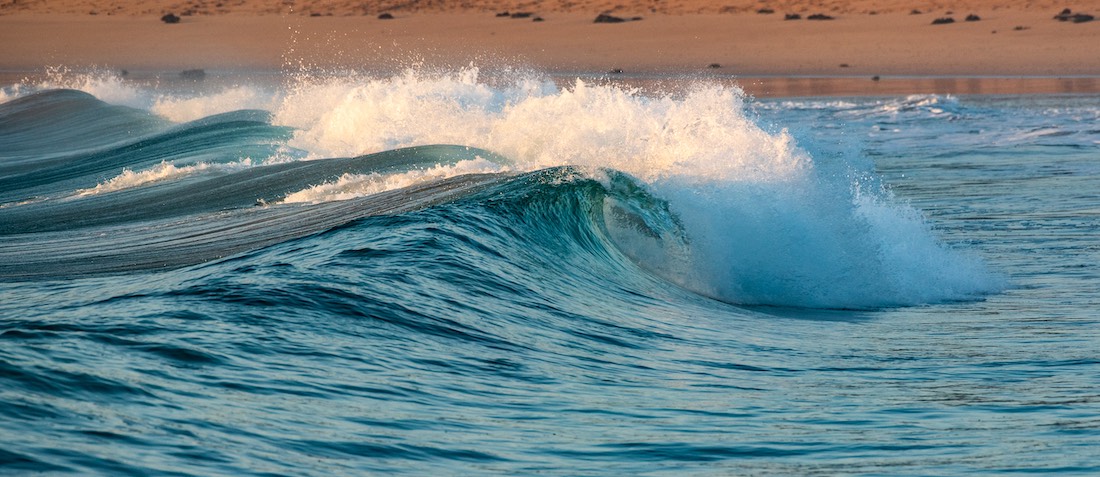
Complex problems require creative solutions and, for makers of dive watches, finding ways to partner with divers and ocean conservation groups provides an opportunity not just to help solve these problems, but also to spread their creative wings and produce collaborative limited-edition watches that offer watch-lovers a unique and attractive piece, while simultaneously contributing to a worthy cause aimed at protecting the environment for which the watch was designed.
As you’ll see below, different makers have gone in different directions, some creating bold statement pieces that are guaranteed conversation-starters, while others take an understated approach. But one thing all these watches have in common is their partnership with worthy organizations doing important work for ocean protection — from tracking the migration of hammerhead sharks, to funding research on the Galapagos Islands. Read on to see the results of these collaborations, and to learn more about exactly what your money supports when you purchase one of these limited-edition watches.
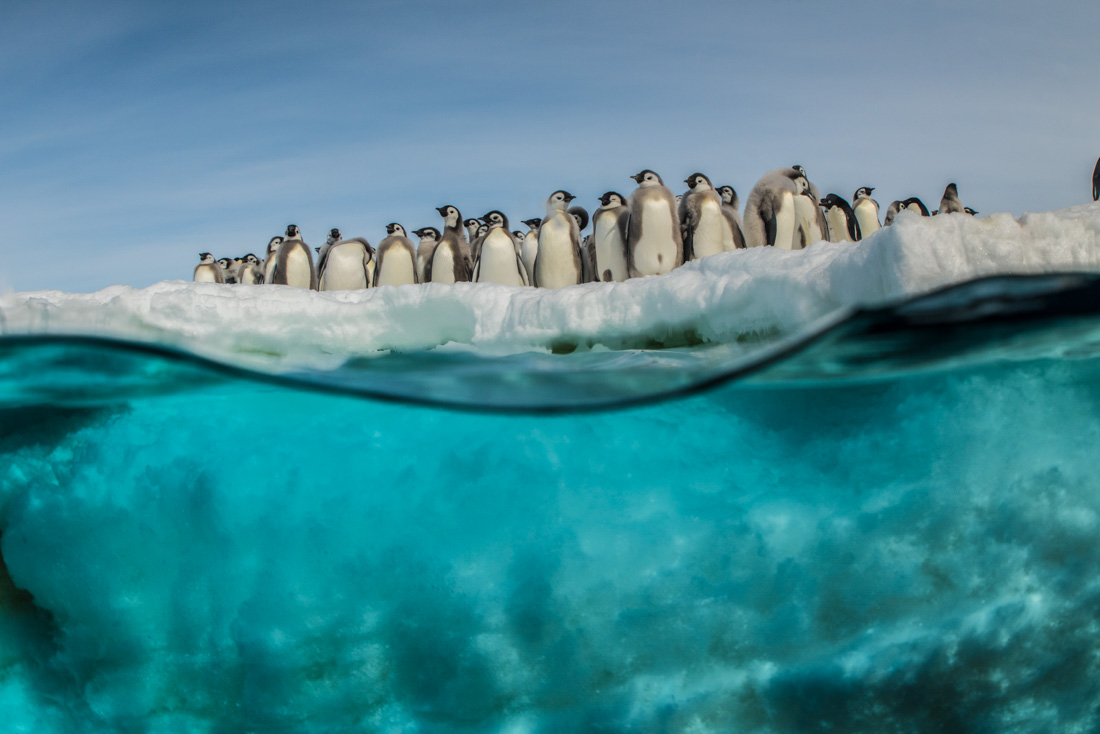
From the manufacturer’s perspective, partnering with charitable organizations can provide tangible benefits in the form of tax breaks, good public relations, and marketing opportunities. Unfortunately, this is also fertile ground for deception (at worst) and greenwashing (at slightly less-worse). While it’s easy to be skeptical of companies promoting a cause (hey, we’re as cynical as anyone), when done right, these partnerships truly can make a difference. Just don’t forget to do your homework.
Critical to note is that most conservation organizations are run on shoestring budgets, often supported only by donations and small grants. As such, partnerships with watch manufacturers can provide both much-needed financial support and visibility for the cause, itself, along with exposure to potential partners, donors, and volunteers. For instance, even a contribution of, say, $10,000 or $20,000 — a drop in the marketing budget bucket of a large manufacturer, and a nice tax write-off, at that — could fund an entire season of research, a major cleanup, or part of a reef restoration.
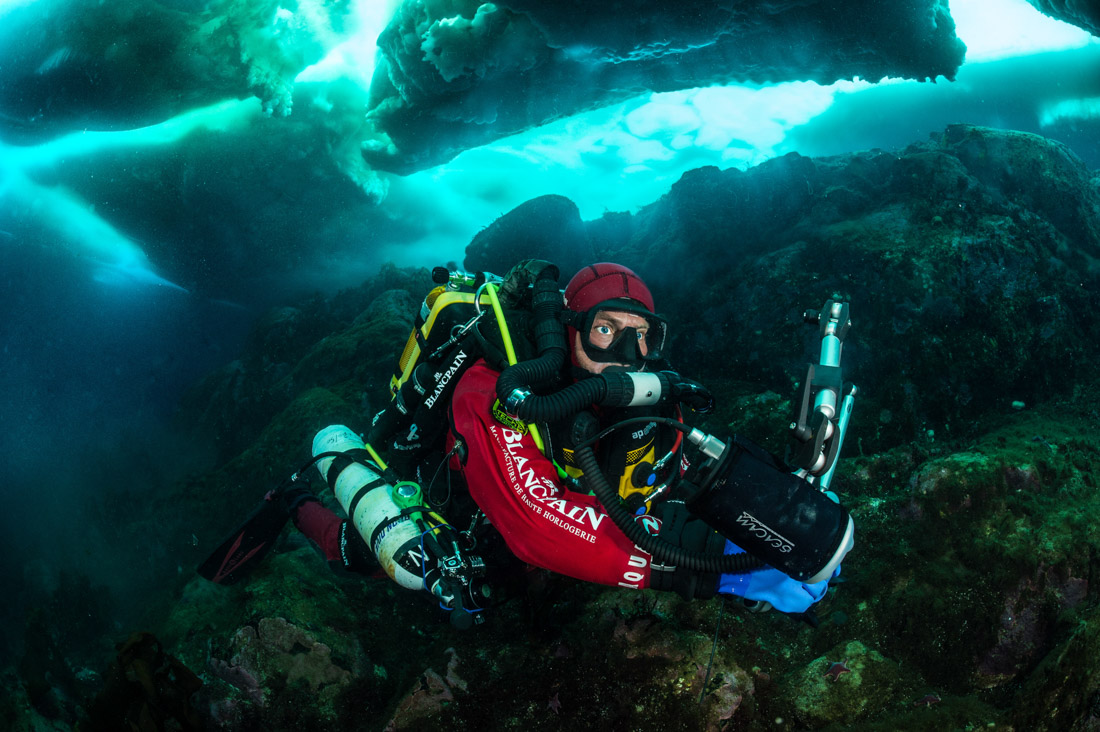
Below, we focus on five dive watches produced specifically in conjunction with conservation organizations and causes. These are not just feel-good watches, but handsome and functional pieces in their own right. We’d be happy to sport any one of these watches, but knowing that the purchase also goes to support a worthy cause may provide that extra incentive needed to click “buy.” From our perspective, these partnerships are a win-win. They are unique, exclusive watches featuring creative designs, with profits directly benefiting the activity for which they’re designed. Note that this is by no means an exclusive list; other companies, such as Rolex, Omega, Bremont, Breitling, Breguet, Seiko, and more have supported, and continue to support, various ocean-related efforts. Let us know how you feel about these partnerships; chime in and tell us about any others we should be talking about.

DOXA SUB1200T Project AWARE II
DOXA has, arguably, one of the richest histories in diving and is deeply embedded within the undersea community. From its long association with the eminently influential Jacques Cousteau, and the Cousteau family, to the fictional, but unforgettable, DOXA-clad adventurer Dirk Pitt of Clive Cussler’s novels, DOXA has always been completely entrenched in the dive community. Limited to 300 pieces, the Swiss-made, ETA 2824-2-powered watch is unmistakably DOXA, with its wide, 44.6 mm cushion case, beads-of-rice bracelet, and combined timing and non-decompression table bezel. What sets the Project AWARE II apart is its striking turquoise dial and accents.
The connection to Project AWARE is blatantly clear, with the organization’s logo featured prominently between 6 and 9 o’clock. If the turquoise dial and distinct DOXA styling weren’t enough to make this a conversation piece, the diver and hammerhead shark will certainly do the trick. Though he might prefer it in an orange colorway, we’d like to think Dirk Pitt would proudly strap one to his suntanned wrist. It’s priced at $2,190 and you can see more here.
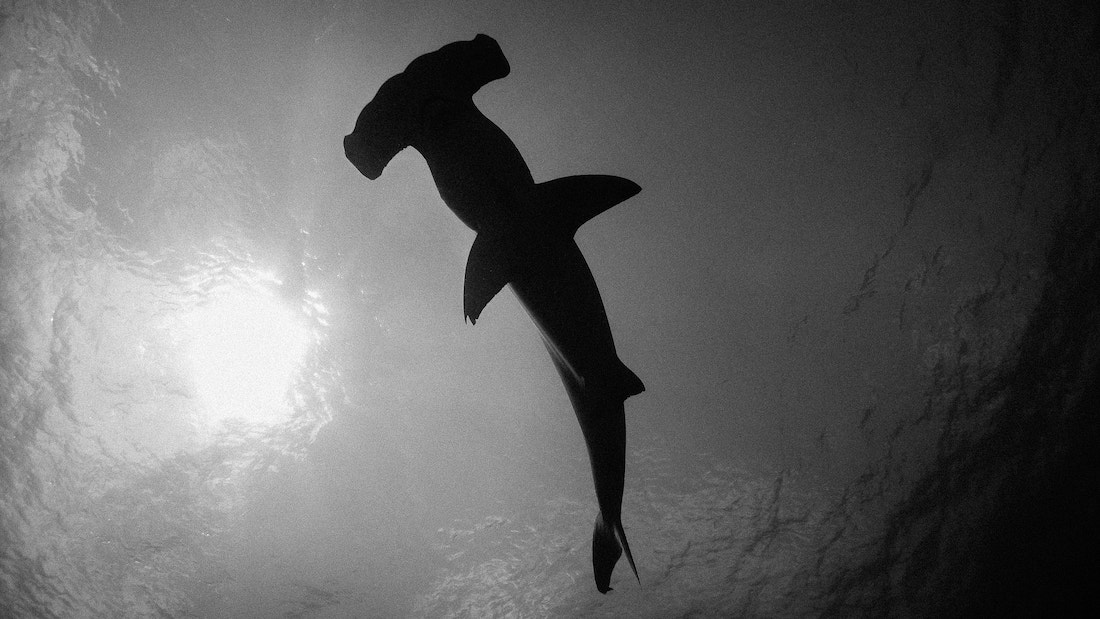
The Cause: Project Aware
Dating back to 1989, Project AWARE began as an environmental ethics project of the Professional Association of Diving Instructors (PADI). Over nearly three decades, Project AWARE has been dedicated to working with worldwide partners — governments, individuals, businesses, and NGOs — to protect the world’s oceans. Aside from diver education and empowering divers to be actively involved in ocean cleanup and protection, Project AWARE provides grants for research and community action (over $5 million contributed); organizes International Cleanup Day and Dive Against Debris; spearheads campaigns for protecting sharks, reefs, and ocean conservation through television announcements and integration into PADI courses; and partners with numerous organizations to advocate for marine conservation and changes to policy. This is just to name a few of their varied projects aimed at cleaning, protecting, and conserving the world’s oceans. As the organization states, they “envision a world where the ocean doesn’t need protecting” — a lofty aim, indeed.
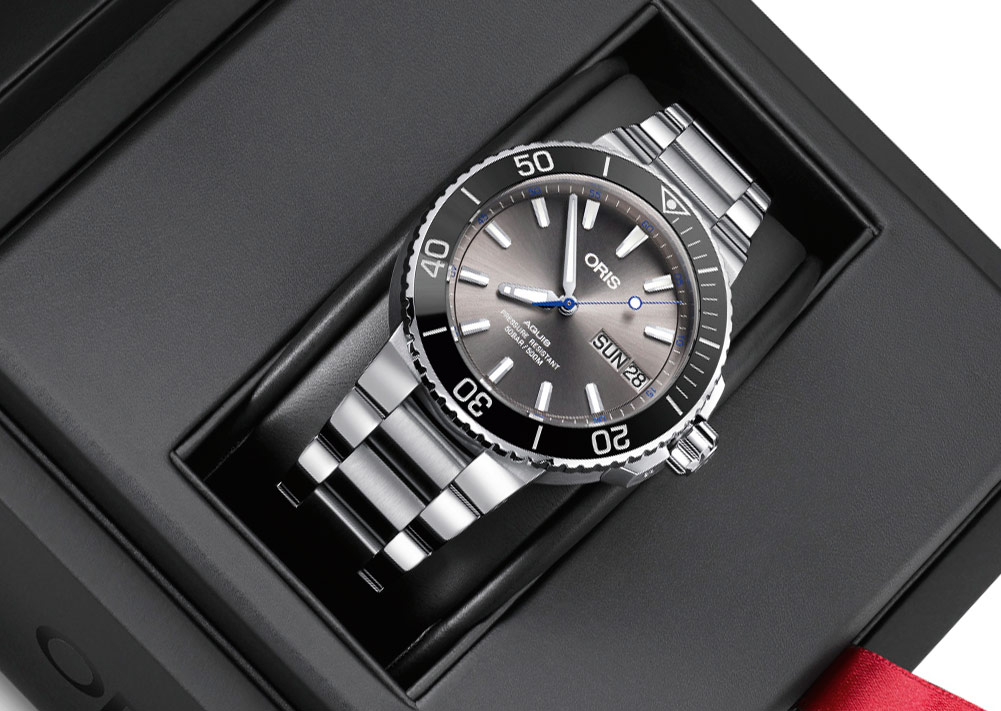
Oris Hammerhead Limited Edition
Nestled within the Aquis line of dive watches, the Oris Hammerhead is a limited edition of 2000 pieces, created in partnership with Pelagios Kakunjá. You won’t find overt sponsorship on the gorgeous sunburst gray dial with applied indices and subtle, rich blue accents on the seconds hand and minute track. Instead, a scalloped hammerhead is featured prominently on the caseback, along with production number, and each watch comes with a special box and certificate.
Available on either rubber or Oris’ supremely comfortable integrated bracelet (just make sure you’re not an avid strap-swapper), the Hammerhead features a 44.5mm case, 500m of water resistance, and is powered by an SW 200-1-based movement with day-date function. If the hammerhead isn’t your style, Oris produces several other limited-edition Aquis models, including the Clipperton (also in conjunction with Pelagios Kakunjá), Staghorn (with the Coral Restoration Foundation), and Great Barrier Reef II (with the Australian Marine Conservation Society). Overall, the aesthetics of this watch are on point, evoking the grays and blues of the ocean, while providing a subtle nod to its charitable cause. It’s priced at $2,550 and you can see more here.
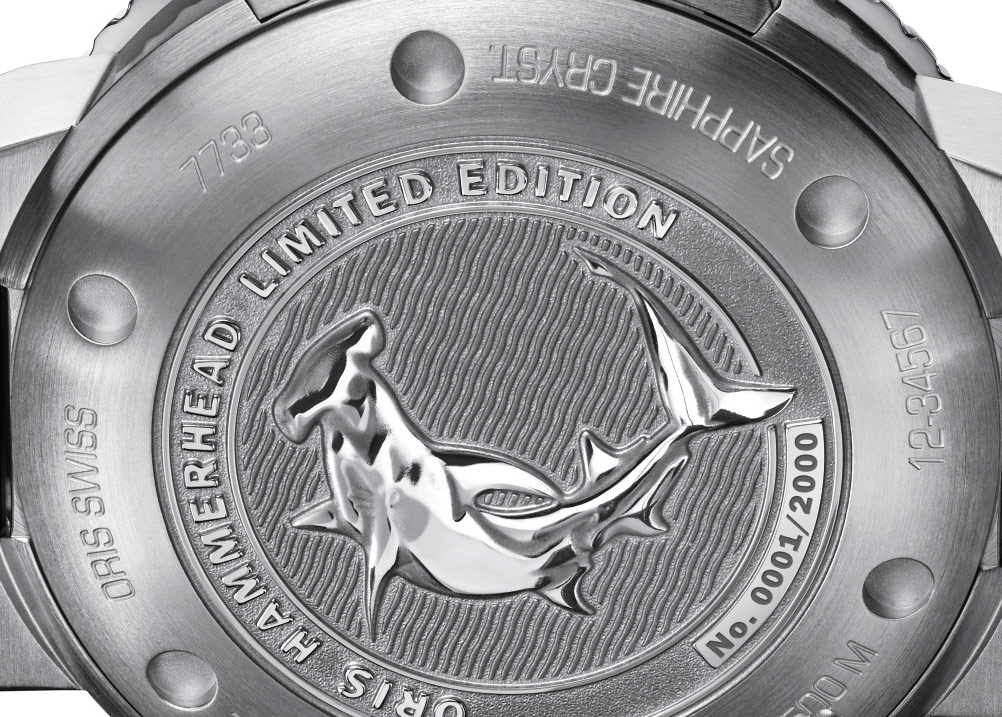
The Cause: Pelagios Kakunjá
Partnering with Mexico-based marine conservation non-profit organization Pelagios Kakunjá, proceeds from the Oris Hammerhead go towards research on, you guessed it, hammerhead sharks. Specifically, the money is supporting the purchase of MiniPAT satellite transmitters used to track the migration of endangered and rapidly declining scalloped hammerheads. Regarding most migratory animals, hammerheads included, we know almost nothing about individual migratory routes and patterns — information crucial for enacting any sort of conservation strategy.
Unfortunately, satellite transmitters and dedicated satellite time are often prohibitively expensive. This is where the Oris Hammerhead comes in. Data retrieved from these transmitters will provide information on the movement and migration on scalloped hammerheads and identify critical habitat as they migrate en masse (groups of up to 500 have been observed migrating together). This is just one of many of the research-based conservation projects in which Pelagios Kakunjá is engaged, most of which are ultimately aimed at the conservation and recovery of sharks.
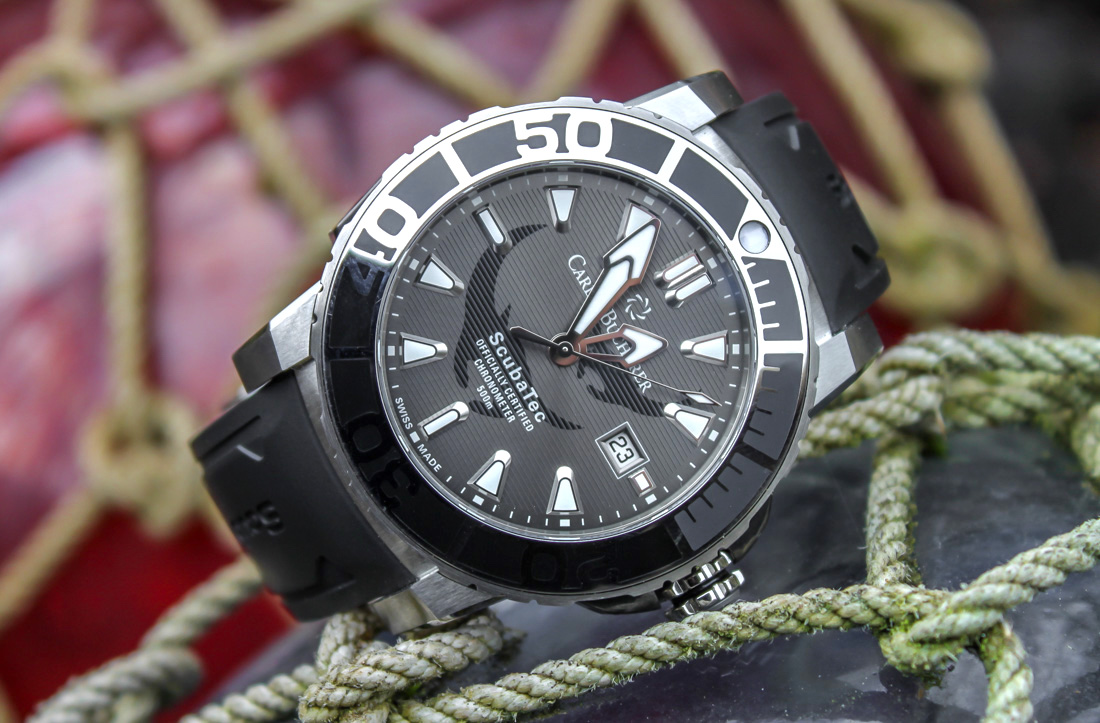
Carl F. Bucherer Patravi ScubaTec Manta Trust Limited Edition
Produced in partnership with the Manta Trust, the aptly named Carl F. Bucherer Patravi ScubaTec Manta Trust Limited Edition (phew, that’s a mouthful) highlights its cause directly on the dial with a pair of elegantly gliding manta rays silhouetted on the glossy, horizontally textured, deep-gray dial. The watch, itself, measures in at 43.5mm in a stainless-steel case with a helium escape valve, and is equipped with an in-house caliber CFB 1950.1 chronometer movement. The unidirectional bezel is bold, with oversized stainless-steel markers sitting flush with the ceramic bezel.
One of the highlights of this watch is the individualized caseback. The manta rays’ undersides are spotted in unique, individual-specific patterns — in fact, researchers use pattern-recognition software on photographs to identify and re-sight individuals in order to track them over time. Each one of the 188 pieces comes with an engraving of a specific individual, spots included, and features that specific manta ray’s identification code. A small detail, but one that we personally love and that makes the watch and the connection to these animals all the more personal. The manta ray dial may be a bit much for some, but the more we stare at it, the more the images evoke thoughts of those otherworldly creatures, and the more we appreciate the choice. Stay tuned for more details and thoughts, as this watch is currently on its way to us for a full review. It’s priced at $6,200 and you can learn more here.
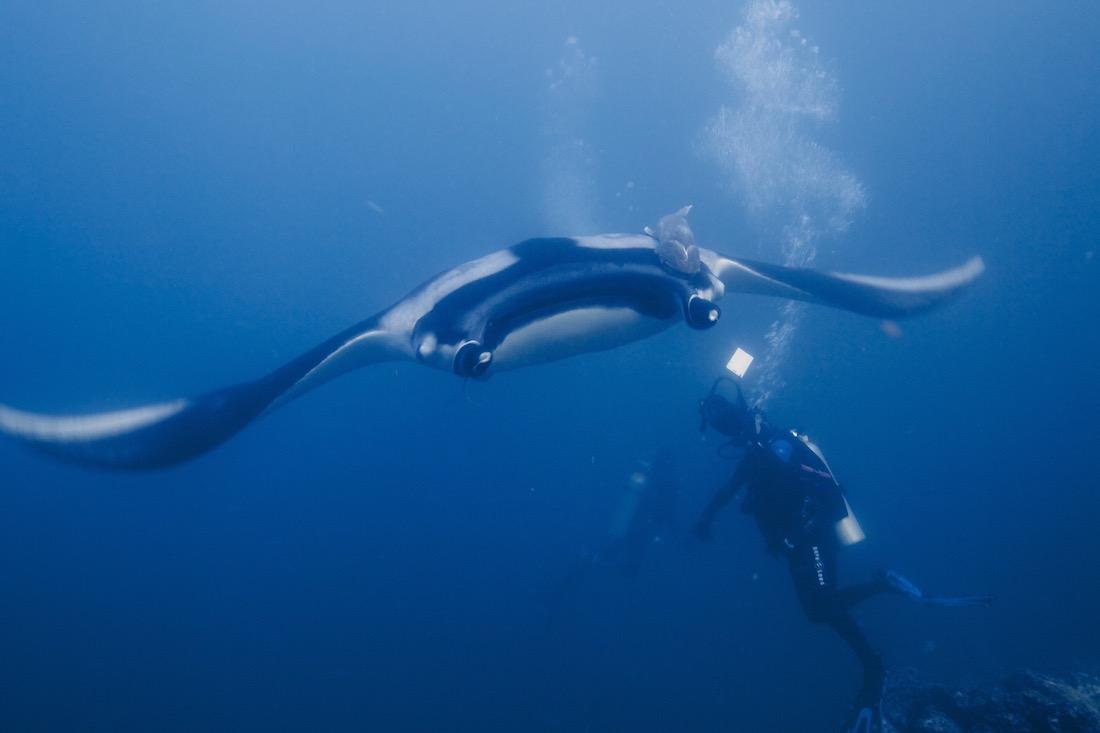
The Cause: Manta Trust
Manta rays are massive creatures, with the larger of the two species, Manta birostris, reaching lengths up to 21 ft. and weighing nearly 3,000 lbs — about the size and weight of a pickup truck. Despite their somewhat frightful and “devilish” appearance, these gentle giants are graceful and elegant, gliding through the water, mouth agape, filter-feeding on microscopic zooplankton. Unfortunately, both species are listed as “vulnerable” on the IUCN Red List, meaning that they have an elevated risk of extinction. The primary threat to manta rays is overfishing — both for their meat, as well as for their gill rakers (cartilaginous structures that protect the gills), used in Chinese medicine.
Formed in 2011, the Manta Trust is a UK-based non-profit organization that partners researchers, educators, and media experts to discover more about Mantas and promote their conservation through research, education, and collaboration with various stakeholders. The Manta Trust was instrumental in helping establish protected areas for mantas in the Maldives, providing data and support to re-assess the listing status, which granted manta rays global legal protection under CITES (Convention on International Trade in Endangered Species), and even partnered with the National Geographic Society to deploy Crittercams on manta rays.
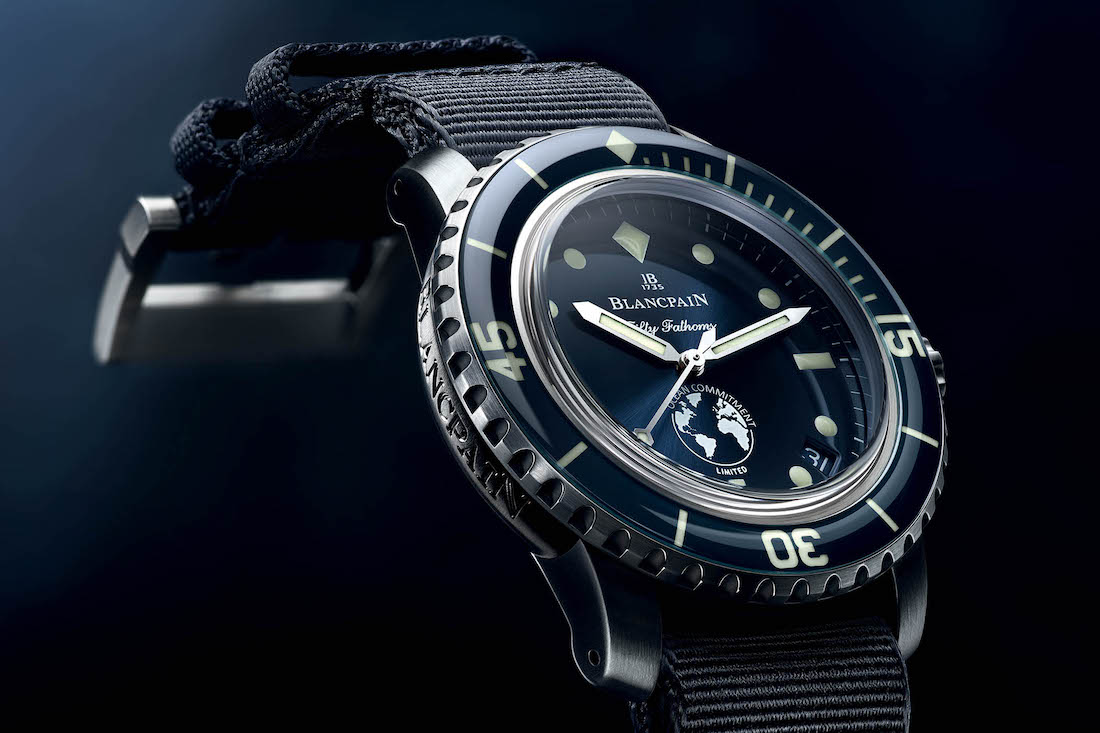
Blancpain Fifty Fathoms Bathyscaphe Flyback Chronograph Bathyscaphe Ocean Commitment III
Originally launched in 1953, the Fifty Fathoms is truly the granddaddy of dive watches. What better way to celebrate that undersea legacy than by renewing vows with the Bathyscaphe Ocean Commitment. For each purchase of one of the 250 pieces, Blancpain has committed to donate €1000. Unlike the previous BOC, the Ocean Commitment Earth logo takes center stage, cleverly stepping in for the circular white and orange water indicator on a classic mil-spec fifty fathoms. The BOC evokes the spirit and aesthetics of the original 1953 model in a deep ocean-blue colorway, but with a completely modern spec, including Blancpain’s caliber 1151 automatic movement with four-day power reserve and silicon hairspring, and a 300m water-resistance rating. Sure, we’re talking over $20,000 for a classic steel watch, but it’s a stunner.
For those truly interested in ocean conservation, the purchase of the BOC also includes membership to the BOC Circle, which provides members access to BOC events and information on the expeditions financed by Blancpain, aided in part by the purchase of these watches. The watch is gorgeous, full stop. From the iconic design, to the deep-blue dial and bezel, the watch screams class. Picture it on the wrist of a dashing, sea-faring billionaire. At an international conference on ocean conservation, he sidles up to a group of frazzled scientists and conservationists and, dejected at their lack of funding for their revolutionary idea, throws down a cool $50 mil in cash and just walks away with a wink and a nod. Again, it’s priced at $20,100 and you can learn more here.
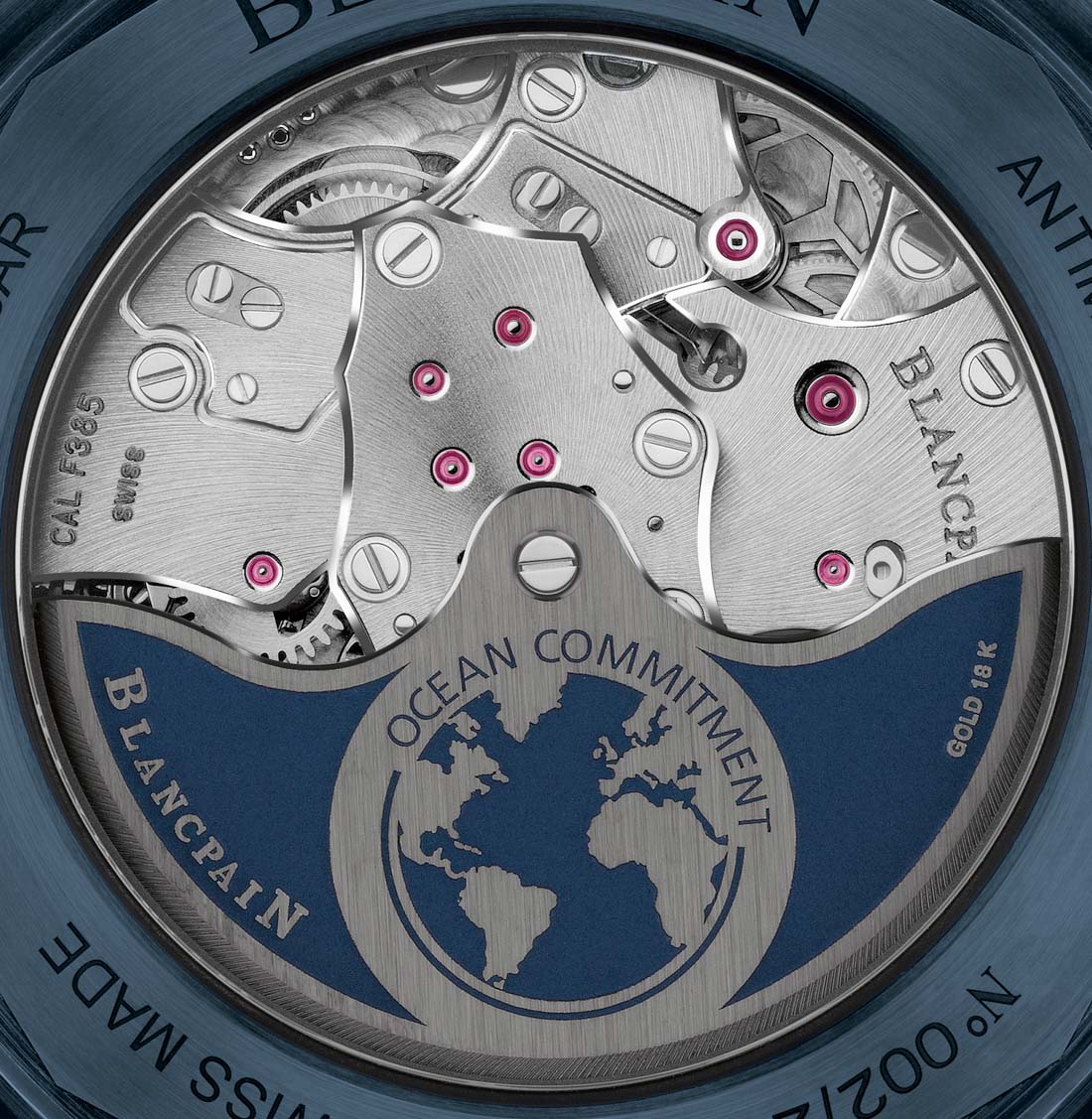
The Cause: Ocean Commitment
Unlike some of the others organizations we’ve mentioned, the focus of Blancpain’s own Ocean Commitment is primarily on expeditions aimed at research and exploration of some of the last untouched places on earth and documenting some of the least-studied and least-known parts of the underwater world. After all, it’s impossible to protect what we don’t know. Core to this approach is Blancpain’s involvement with Pristine Seas Expeditions, a partnership with the National Geographic Society that aims to protect the last wild places in the ocean. A major focus of all these expeditions is outreach — letting the world know that these places exist and are in dire need of protection.
Blancpain has also sponsored the World Ocean Summit every year since 2012, and now the World Ocean Initiative. This is no mere PR event, but a major forum that brings together industry, government leaders, conservation groups, and other international organizations, all with a common goal of finding ways to create a sustainable future for our oceans. Through this initiative, Blancpain has also partnered with The Economist to initiate The Protectors, a funding project ultimately aimed at protecting 30% of the world’s oceans in marine-protected areas by 2030. These clear, definable goals are ambitious, but Blancpain certainly isn’t afraid of a challenge.
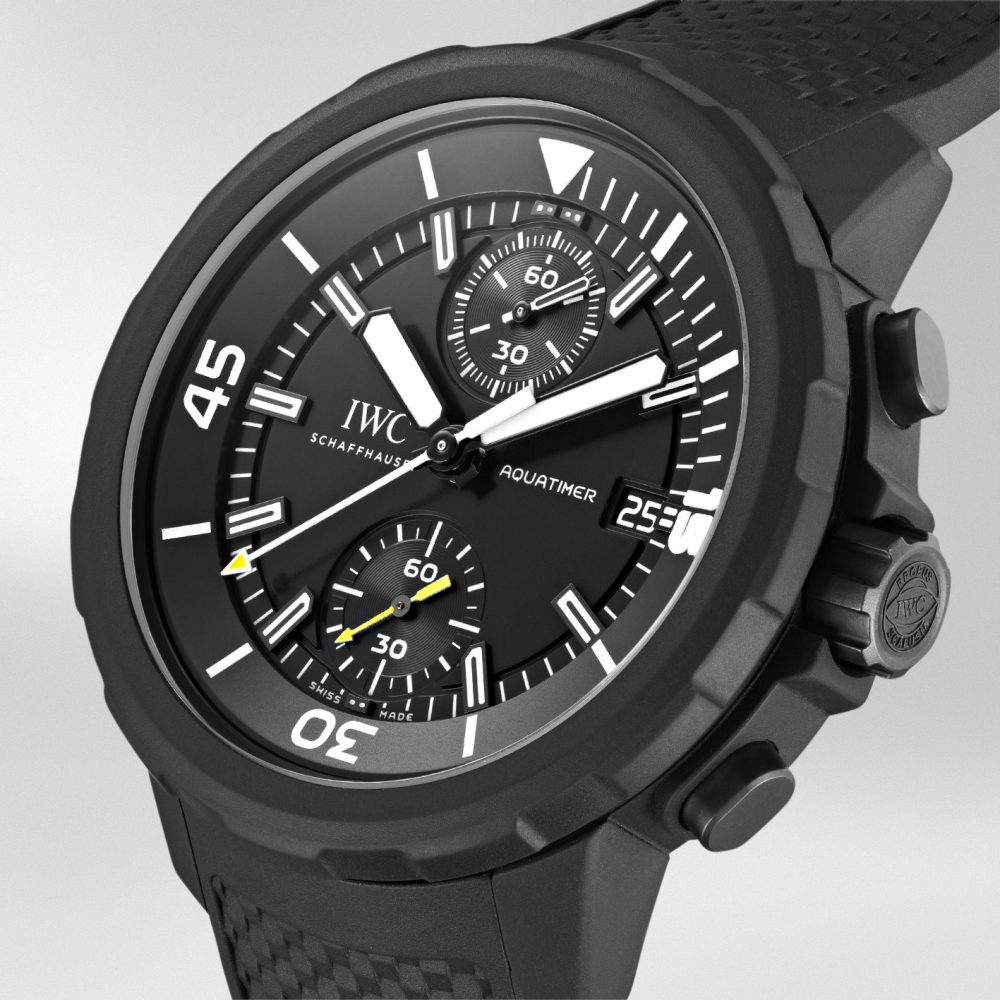
IWC Aquatimer Chronograph Edition “Galapagos Islands”
The only chronograph on this list, the IWC Aquatimer Galapagos Islands features a 45mm stainless-steel case covered in black vulcanized rubber, giving the watch a unique look and texture. The monochrome theme is carried on in the dial, broken up only by a couple hints of yellow. Branding for the Galapagos Island connection is located only on the caseback, which features a marine iguana; found only on the Galapagos Islands, it’s the only lizard in the world able to swim and forage in the sea. A welcome (to some) feature on this watch is IWC’s quick-change strap system.
True to its dive roots, this edition also includes IWC’s internal/external rotating SafeDive bezel. The movement is an 89365-caliber flyback chronograph movement. By featuring a chronograph movement, the watch becomes a capable piece for exploring both land and water, a versatility that mimics the featured marine iguanas. Perhaps we can’t picture this on the wrist of Charles Darwin (nice image though), but we could certainly see it on our own. The vulcanized rubber on the case and the land-to-sea concept is perfectly suited to these remote volcanic islands. It’s priced at £8,650 and you can learn more here.
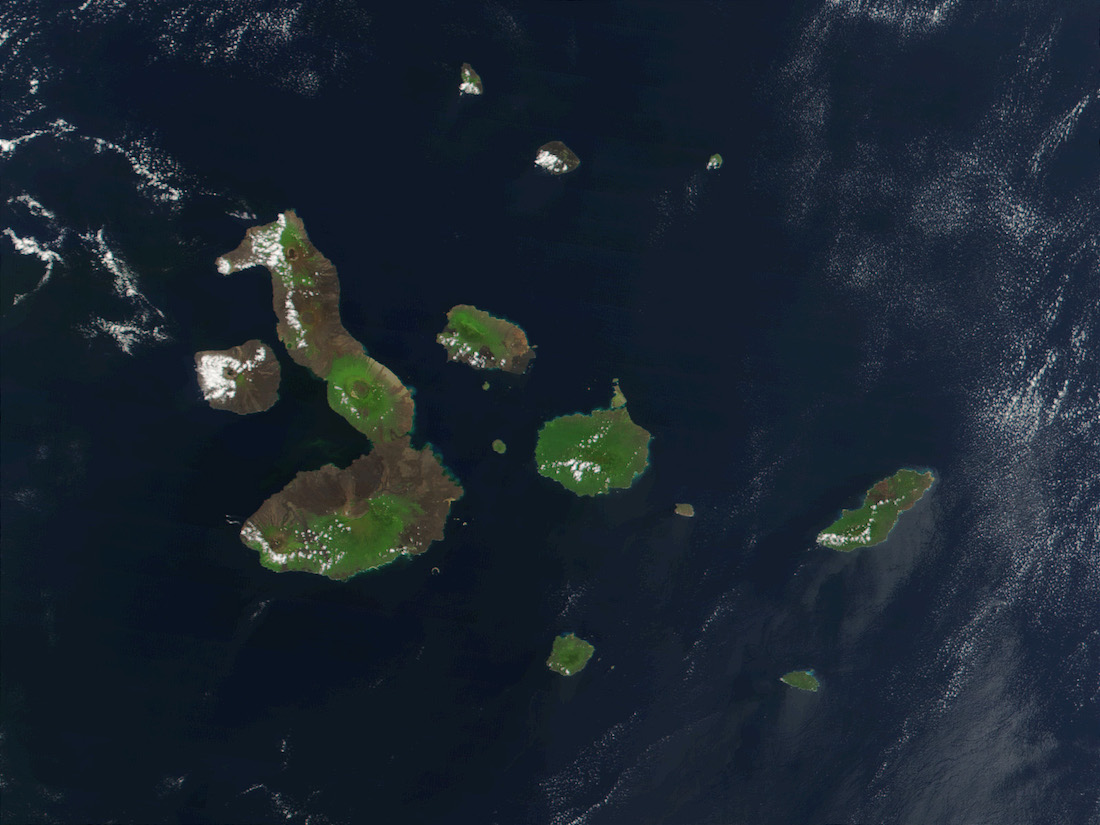
The Cause: Charles Darwin Foundation
Though Charles Darwin spent five years circumnavigating the southern hemisphere on the H.M.S. Beagle, his name will always be inextricably linked to the Galapagos Islands, where he spent a scant, but highly influential, five weeks. The unique inhabitants of these islands — which differ from their South American cousins and, themselves, differ from island to island — were crucial to Darwin’s development of evolutionary theory. Located in the eastern Pacific Ocean, nearly 1000 km from the west coast of Ecuador, these isolated islands are home to myriad species found nowhere else on earth: from equatorial penguins, to giant tortoises weighing nearly 1000 pounds, to Darwin’s famous finches.
The surrounding undersea environment is as rich and interesting as anywhere else on earth, teeming with sea turtles, sharks, rays, and even iguanas. Sadly, both the land and sea of the Galapagos is threatened: introduced plants and animals, illegal fishing, booming tourism, and poaching all threaten these wildly unique ecosystems. The Charles Darwin Foundation and its research station on the Galapagos, established in 1959, were founded specifically to learn more about these unique plants and animals and find solutions for their long-term sustainability and conservation. Since 2009, proceeds from the sale of each Charles Darwin limited edition, including this Galapagos Islands edition, go toward supporting the research, education, outreach, and conservation work of the Foundation.
